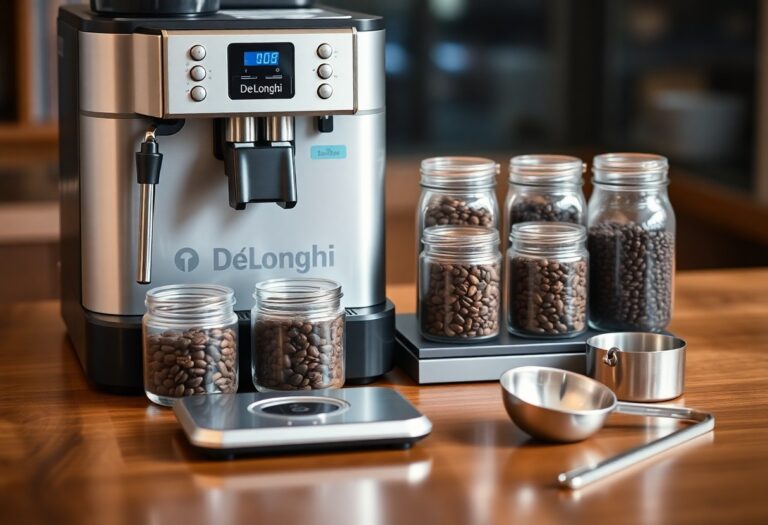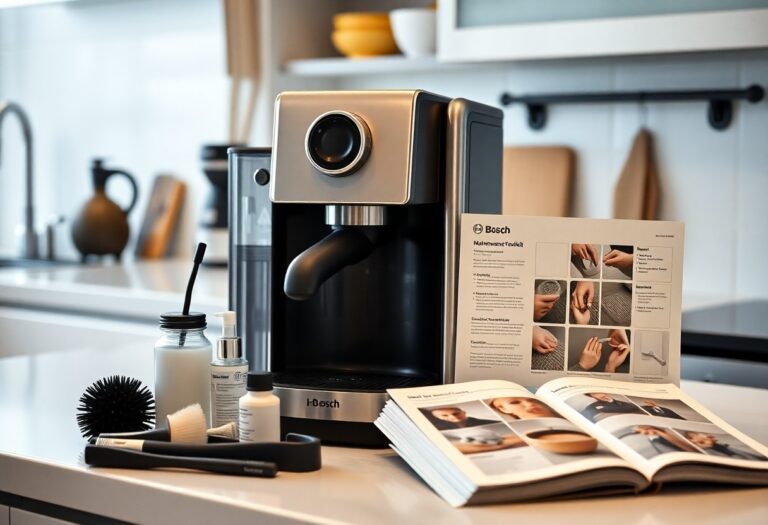How to Make Coffee with a Coffee Machine: Beginner’s Guide
Using a coffee machine transforms the daily ritual of making coffee into a consistent and enjoyable experience. For beginners, mastering this process can seem daunting, but with the right guidance, it becomes straightforward and rewarding. This beginner’s guide is designed to walk you through essential steps and knowledge on how to make coffee with a coffee machine.
You will learn about:
- Different types of coffee machines suited for various needs
- How bean selection and grind size influence flavor
- Techniques to prepare espresso shots with precision
- Tips for frothing milk to create café-quality cappuccinos
- Maintenance practices that keep your machine performing at its best
This guide empowers you to start making great coffee at home confidently, laying a strong foundation for exploring more advanced brewing skills later.
Maintenance Practices
Proper maintenance is crucial for the longevity and performance of your coffee machine. Here are some resources that provide detailed instructions on how to clean different types of coffee machines:
- K-Cup Coffee Machine Maintenance Instructions
- Ultimate Maintenance Guide for Keurig Coffee Machines
- Complete Step-by-Step Guide to Descale a Keurig Coffee Machine
- Maintenance Guide for Krups Coffee Machines
These guides will help ensure your coffee machine remains in optimal condition, allowing you to enjoy great coffee for years to come.
Understanding Coffee Machines
Coffee machines come in various styles designed to suit different preferences and skill levels. Knowing the different types of coffee machines helps you pick the one that fits your lifestyle and taste.
1. Pod Machines
- Use pre-packaged coffee pods or capsules
- Offer convenience and speed with minimal cleanup
- Limited control over brewing parameters like grind size or strength
- Ideal for beginners who want a quick, consistent cup without fuss
2. Bean-to-Cup Machines
- Grind whole beans fresh for each cup, enhancing flavor and aroma
- Provide options to adjust grind size, coffee strength, and milk frothing
- Often equipped with automatic milk frothers for lattes and cappuccinos
- Suitable if you enjoy customization but want a mostly automated process
3. Traditional Espresso Machines
- Require manual grinding, tamping, and brewing skills
- Offer full control over every aspect of espresso preparation
- Typically include a steam wand for frothing milk manually
- Best for enthusiasts willing to learn barista techniques for authentic espresso
This range of machines reflects different balances between convenience, control, and hands-on involvement. Each type has its own approach to extracting coffee flavor, impacting your daily coffee ritual significantly.
Choosing the Right Coffee Machine for You
When it comes to choosing the right coffee machine for your brewing needs, there are several factors to consider based on your preferences and lifestyle. Here is a breakdown of the key features and benefits of pod machines, bean-to-cup machines, and traditional espresso machines:
1. Pod Machines
Pod machines are known for their convenience as they use pre-measured coffee pods, eliminating the need for grinding beans or measuring coffee.
They offer a wide range of flavors and coffee blends that cater to different taste preferences.
Pod machines are typically easy to clean with minimal maintenance required.
2. Bean-to-Cup Machines
Bean-to-cup machines allow you to customize your coffee by adjusting the grind size, strength, and sometimes even temperature.
Grinding fresh beans right before brewing ensures maximum flavor and aroma in your cup.
Many bean-to-cup machines come equipped with automatic milk frothing options, making it easier to create specialty drinks like lattes and cappuccinos.
3. Traditional Espresso Machines
Traditional espresso machines require manual control over every step of the brewing process, allowing you to fine-tune the extraction for a personalized shot.
For coffee enthusiasts who appreciate the art of espresso-making, traditional machines offer a hands-on approach that results in a rich and authentic espresso flavor.
Using a traditional espresso machine requires practice and skill in grinding, tamping, and steaming milk, making it a rewarding experience for those willing to invest time and effort.
Consider your lifestyle, preferred level of involvement in the brewing process, and desired coffee quality when selecting the right coffee machine that suits your needs.
The Science Behind Coffee Beans and Grind Size
The flavor of your coffee is greatly influenced by the type of beans you use, where they come from, how they’re roasted, and the grind size. Here are some key things to keep in mind:
1. Origin
Coffee beans from different regions have distinct flavors. For example, beans from Ethiopia may taste fruity and floral, while beans from Brazil might have nutty and chocolatey flavors.
2. Roast Level
The way beans are roasted affects their taste. Light roasts retain more of the bean’s original flavors and acidity, while dark roasts have a bolder, smokier taste. This is a fundamental aspect of coffee theory that every coffee lover should understand.
3. Grind Size
The grind size of your coffee beans is crucial for brewing. Different methods require specific sizes to get the best flavors out. Here’s a breakdown:
- Coarse grind: Perfect for French press or cold brew methods.
- Medium grind: Works well with drip coffee makers.
- Fine grind: Necessary for espresso machines.
Grinding your own beans just before brewing ensures maximum freshness and flavor. Pre-ground coffee loses its aroma and taste more quickly due to increased surface area exposure to air. By grinding your beans fresh, you can enjoy a richer and more aromatic cup of coffee every time.
Experimenting with different origins, roast levels, and grind sizes allows you to tailor your coffee experience to suit your preferences. It’s a fun and rewarding journey that adds depth and complexity to your daily cup of joe.
Mastering Espresso Preparation Techniques
Importance of Warming Up the Machine and Cup
Before diving into the espresso-making process, it’s crucial to give your machine and cup some time to warm up. This step ensures that the brewing temperature is optimal for extracting the rich flavors from your coffee grounds. By preheating your equipment, you set the stage for a delicious and well-balanced shot of espresso.
Ideal Extraction Time for Golden Crema
Achieving that perfect golden crema on top of your espresso shot is a true art form. To master this technique, you need to focus on the extraction time. Typically, an ideal extraction time falls between 17 to 24 seconds. This timeframe allows for the flavors to be extracted evenly, resulting in a creamy crema that enhances both the visual appeal and taste of your espresso.
Remember, consistent practice and attention to detail are key when mastering espresso preparation techniques. By following these tips and honing your skills, you’ll be well on your way to creating barista-quality espresso right in the comfort of your own home.
Creating Perfectly Frothy Milk for Cappuccinos
Frothy milk is a key component in many coffee beverages, especially cappuccinos. Achieving that perfect froth can elevate your coffee experience to new heights. Here are some tips to help you create perfectly frothy milk using a steam wand or automatic frother:
1. Select the Right Milk
Opt for semi-skimmed milk as it provides an ideal balance between foam and creaminess. The lower fat content helps in creating a stable microfoam that is essential for cappuccinos.
2. Using a Steam Wand
Preparation
Fill a stainless steel pitcher with cold milk, ensuring it’s below the maximum fill line to allow space for expansion during frothing.
Positioning
Submerge the steam wand tip just below the surface of the milk, slightly off-center to create a whirlpool effect for even heating.
Texturing
Position the steam wand tip at an angle to introduce air into the milk while maintaining a vortex motion. This process helps in creating velvety microfoam with small, uniform bubbles.
Temperature Control
Keep an eye on the temperature, aiming for around 150°F (65°C) without exceeding 160°F (71°C) to prevent scalding the milk.
3. Automatic Frother
Fill & Start
Pour cold milk into the designated container and select the appropriate frothing setting.
Wait & Monitor
Allow the automatic frother to heat and froth the milk according to your desired consistency.
Pouring Technique
Once ready, gently swirl the frothed milk to incorporate any large bubbles before pouring it over your espresso shot.
By mastering these techniques, you can consistently create beautifully frothy milk for your cappuccinos, adding a touch of sophistication to your coffee-making skills.
Exploring Brewing Methods: Automatic vs Manual Techniques
When it comes to brewing coffee with a coffee machine, you have the option to choose between automatic and manual methods. Each approach offers distinct features and benefits that cater to different preferences and skill levels:
Automatic Machines:
- Convenience: Automatic machines are user-friendly and require minimal effort, making them ideal for beginners or those looking for a quick cup of coffee.
- Consistency: These machines ensure a consistent brew each time, eliminating the need for manual adjustments.
- Programmable Options: You can often customize settings such as brew strength, temperature, and cup size for a personalized experience.
- Time-Saving: Automatic machines are efficient and can brew coffee rapidly, perfect for busy mornings.
Manual Methods:
- Control: Manual techniques like pour-over or French press offer greater control over variables such as water temperature, brewing time, and coffee-to-water ratio.
- Customization: With manual methods, you can experiment with different brewing parameters to tailor your coffee to suit your taste preferences.
- Craftsmanship: Many coffee enthusiasts appreciate the hands-on approach of manual brewing, allowing them to hone their skills and create unique flavor profiles.
- Flexibility: Manual methods adapt well to different coffee beans and grind sizes, offering versatility in brewing techniques.
Whether you opt for the convenience of an automatic machine or the hands-on experience of manual brewing, both methods can result in delicious cups of coffee. The choice between automatic and manual ultimately depends on your preferences for control, customization, and overall coffee-making experience. Experimenting with both approaches can help you discover which method aligns best with your taste preferences and lifestyle.
Maintaining Your Coffee Machine for Longevity and Quality Consistency
Regular maintenance is crucial for ensuring the longevity and consistent performance of your coffee machine. Neglecting cleaning the machine, can lead to the buildup of coffee residue, oils, and minerals, affecting the taste of your coffee and the functionality of the machine. Follow these tips to maintain your coffee machine effectively:
1. Daily Cleaning Routine:
- Wipe down the exterior of the machine with a damp cloth to remove any spills or splatters.
- Empty and rinse the drip tray to prevent mold growth and maintain hygiene.
2. Weekly Cleaning Tasks:
- Descale your machine regularly to remove mineral deposits that can clog the internal components.
- Clean the brewing unit and portafilter to prevent coffee oils from going rancid and affecting the taste of your brew.
3. Monthly Maintenance:
- Deep clean the water reservoir, filters, and any removable parts following the manufacturer’s instructions.
- Check for leaks, unusual noises, or changes in performance that may indicate a need for professional servicing.
Incorporating simple cleaning routines into your coffee-making ritual not only ensures a great tasting cup of coffee but also extends the lifespan of your machine. This saves you time and money in the long run while allowing you to enjoy consistently delicious brews every day. If you’re using a filter coffee machine, these brewing instructions can further enhance your experience.
Conclusion
This beginner’s guide recap on How to Make Coffee with a Coffee Machine highlights essential steps to get you started confidently. Mastery begins with understanding your machine type—pod, bean-to-cup, or traditional espresso—and learning how each affects the brewing process.
To deepen your skills:
- Explore online tutorials specific to your coffee machine model.
- Watch videos demonstrating grind adjustments, tamping techniques, and milk frothing.
- Follow step-by-step guides tailored for pod machines if convenience is your priority.
- Engage with barista forums and communities for tips on manual espresso machines.
Continuing education through these resources helps you refine technique, troubleshoot issues, and experiment with coffee varieties. Your journey from beginner to coffee enthusiast thrives on practice paired with reliable instruction. Keep brewing, keep learning, and enjoy every cup made with care.







